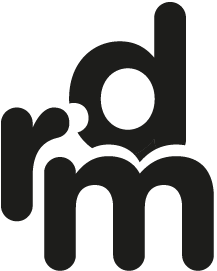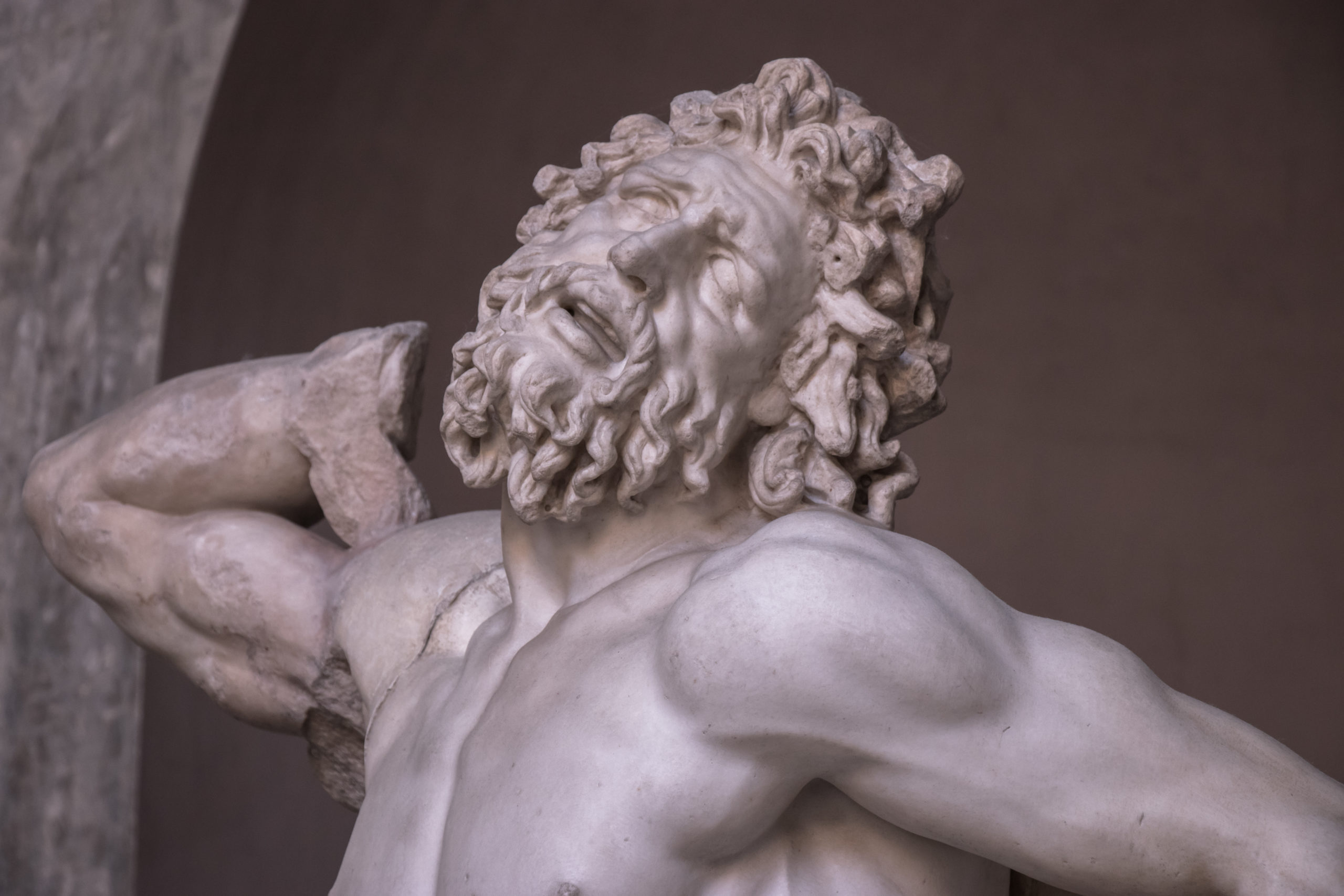
How I organize my day with TickTick
It’s not a secret: I’m a mess. I always relied on my memory to remember when I have to do something, go somewhere, meet a deadline or provide malt to the cat. If you have little things to take care of, this kind of works, but when you’re adding up tasks (both work and personal related), you need to start noting down and tracking all the things you need to do. I used many apps to achieve this: Simplenote, Google Calendar, Todoist, Things, etc., but in the end, I decided to go with TickTick, and I will explain why.
Per their website’s description: “Join millions of people to capture ideas, organize life, and do something creative every day.”. It sounds fascinating, but in the end, it’s just a work/life task manager app. A good one, though. It allows you to add tasks, notes, and to-do lists with a nice UI and good integration between their desktop and mobile apps.
Before using TickTick, I was mostly using Simplenote1From the Automattic family 😉. The major feature of Simplenote is that it’s… simple, which is not bad per se, but it doesn’t allow you to do much more than writing notes (in a simple way) and sync them between devices. I got used so much to write everything down in plain text that I forgot how useful it would be, for example, to have a task with a small checkbox and a deadline set where I can just “tick” once it’s done. With the help of my former team lead in Automattic, we figured some apps that might be helpful for what I was looking for; however, it was kind of hard to find something that would work for me. In the end, I tried TickTick per his suggestion, and I ended up using it every day.
I’m not going to bother you with a setup guide, they have their own support docs and they’re better written than anything I can write here, so I will just show how I organize all my things.
This is basically the general overview of the app:
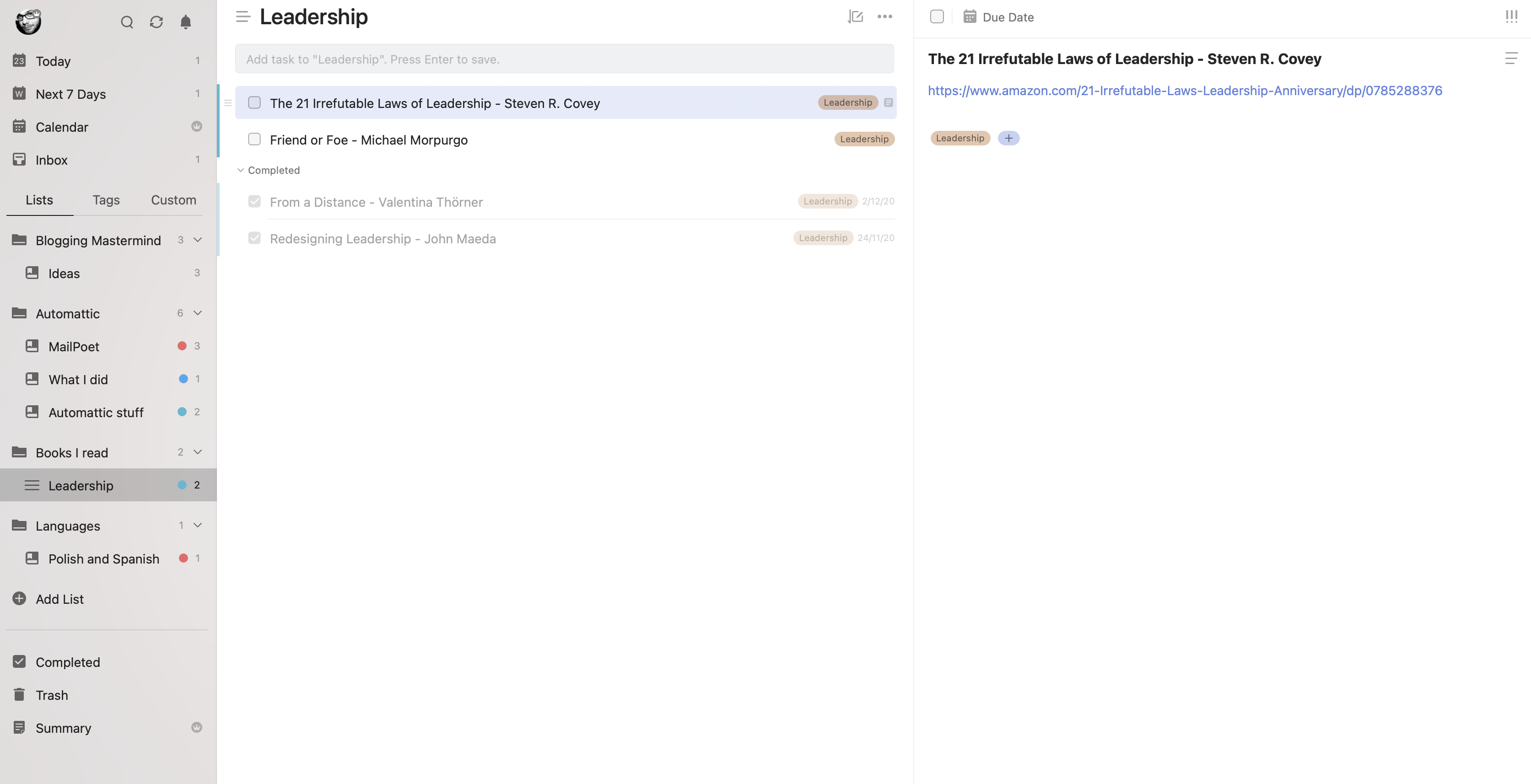
On the left sidebar, I have 4 folders: Blogging Mastermind, Automattic, Books I read, and Languages. Each folder contains Note lists, except for the “books” one, which contains a Task list. In the end, it doesn’t really matter if your list is a Note or Task one, as you can convert any item into a task or a note. My personal approach here is: if the list is just going to be a succession of checkboxes (like books I want to read, games I want to play, groceries, etc.), then I’m adding a Task list; if I’m mixing, I’m adding a Note list. It might not be the approach that other people have, but it’s the one it works for me.
There are two things that I really like from this app:
- I can see the “completed” tasks and browse them quickly.
- I can write additional notes on each task on the right panel, so if I click on the task itself, I can see additional information I added (as seen on the screenshot, I added a link to Amazon to get the book want to read).
The latter is actually handy for me, as it allows me to keep track of all the things I did during the week to submit them later in my weekly recaps to my team. I start with a note, add what I’m doing on the right side, and convert the note as a task and check it when I submit that week’s recap.
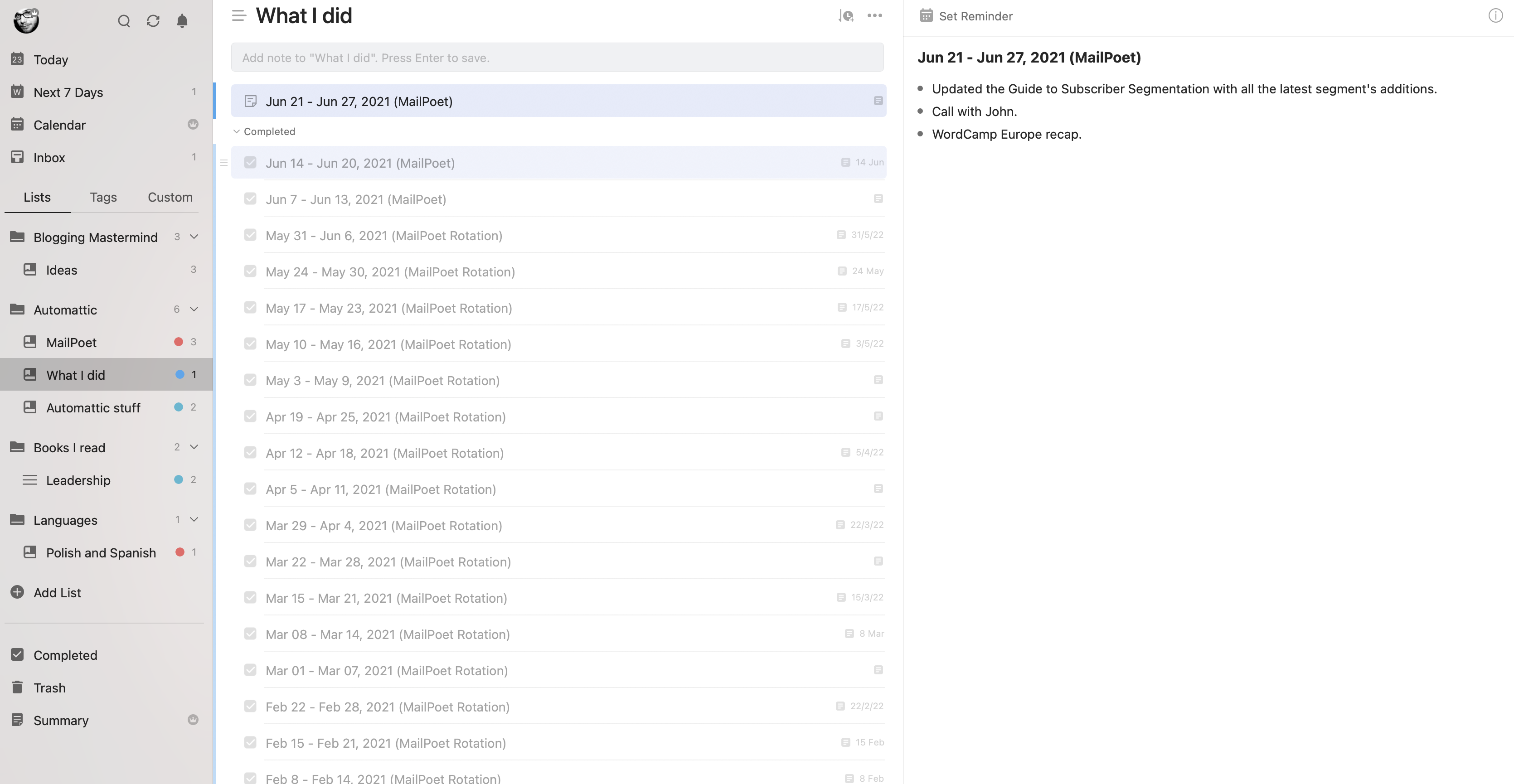
When you have plenty of items on your lists, it’s super important to keep everything organized and tagged; otherwise, the whole purpose of having this app would be compromised since you’ll be just adding up things and things and things without any control. Having thousand of tags is also not helpful, so I’m simplifying them to the minimum:
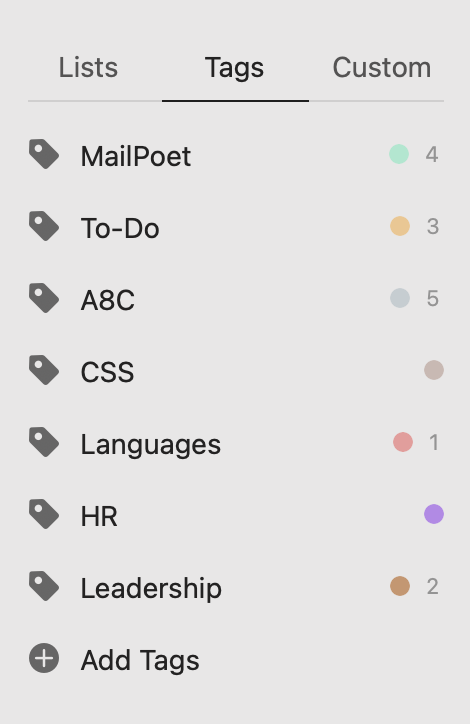
I’m operating only with the tags displayed above. To-Do is, in the end, the tag I use the most. It allows me to quickly see all the tasks that require direct action from me in a limited period of time, no matter the nature of the task (personal or professional). The rest of the tags are for the pure sake of information, in case I need to quickly search for something related to the language classes I’m taking, leadership, etc.
And To-Do is very close together with the usage of deadlines, another feature that I find very useful. If there’s something that needs to be handled before a certain period of time, I’m setting up a date for the task:
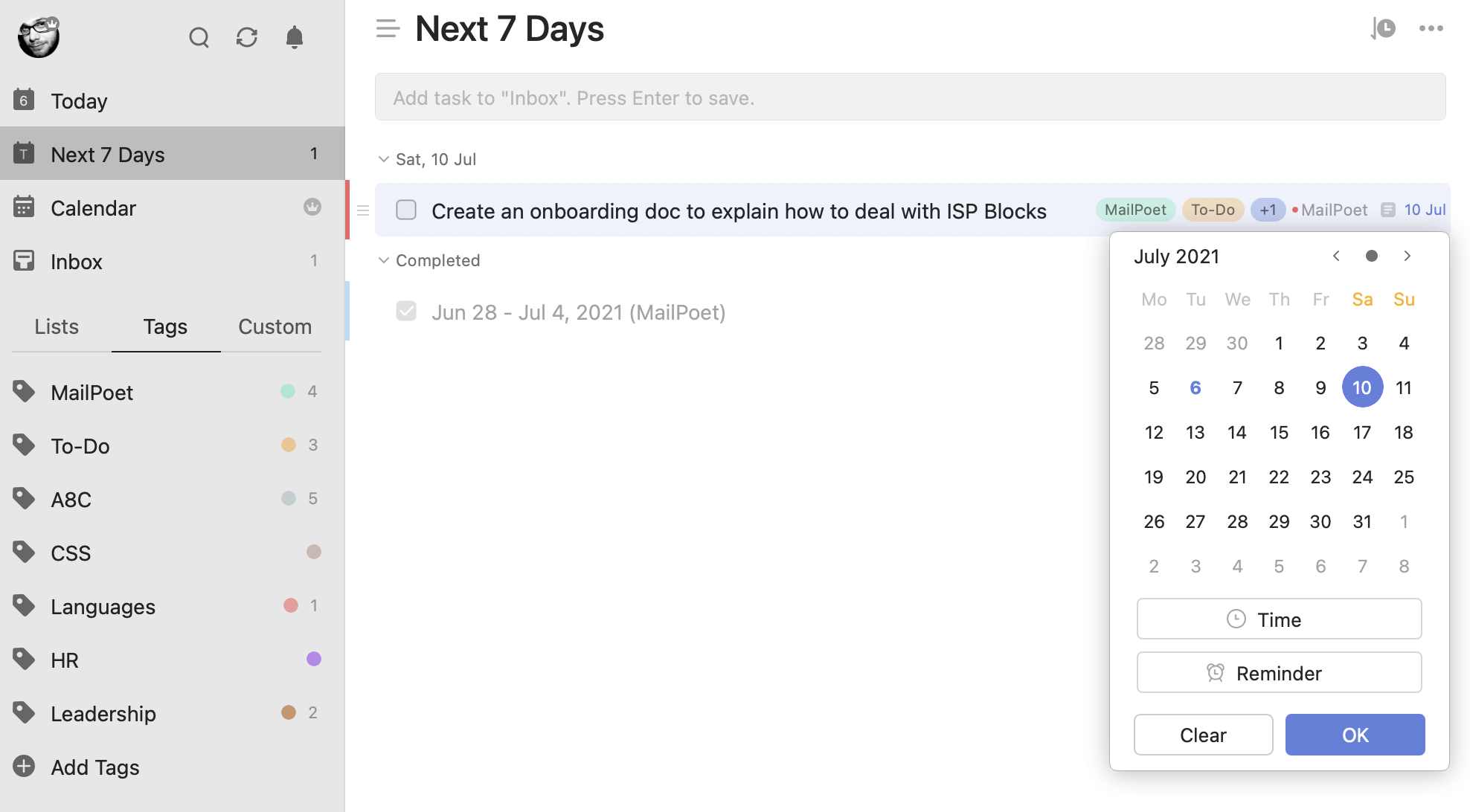
With that, if I click in “Next 7 days”2or “Today” if you like to play hard., I can see the tasks I set up with a deadline, so I won’t forget that they’re there, for me to give them love. I’m personally not using the premium functionalities (yet), but if you sign up for premium, you can also sync your calendar with your tasks, so those with a deadline will show up in your calendar. TickTick also offers integration with Mac’s widgets if you’re using them in your workflow.
TickTick offers a cool set of paid premium functionalities. Of all of them, the most interesting for me is the calendar. It justifies the purchase of premium? It’s not entirely clear for me, but I would definitely give it a try, especially if you’re used to planning your life and work by using calendars. If in the future I discover more cool ways to use TickTick (including or not premium), I will definitely update this post with relevant information.
